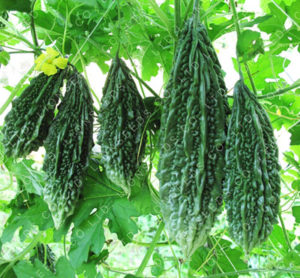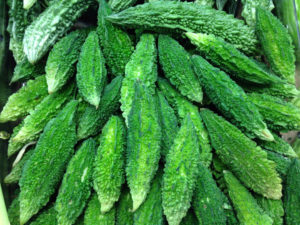 General information:-
General information:-
Another name of Bitter gourd is “bitter melon” and is also known as “Karela” in Hindi. The botanical name of bitter gourd is Memordica charantia and it belongs to the family of “Cucurbitaceae”. It is popularly known for its medicinal, nutritional and other excellent health benefits. Because of its high demand in the market, bitter gourd farming is done very successful. Bitter gourd is mainly used for making juice and for culinary purpose. It is a rich source of Vitamin B1, B2 and B3, C, beta-carotene, zinc, iron, phosphorus, potassium, manganese, folate and calcium. It has health benefits such as it helps in preventing blood disorders, detoxifies blood and liver, boosts immune system and helps in weight control.
Soil:-
Sandy loam soil which is rich in organic content and has good drainage system is ideal for the bitter gourd cultivation. The pH of the soil ranging from 6.5-7.5 is best for bitter gourd farming
Popular varieties with yield:-
Punjab Kareli-1: Released in 2009. The variety has green leaves which are smooth and serrated. They bear long fruits which are thin and green in color. First fruit harvesting is done after 66 days. The fruits have an average weight of 50 gm and it gives an average yield of 50 qtl/acre of fruit.
Land preparation:-
For bitter gourd farming, well prepared land is required. To bring the soil to fine tilth, 2-3 ploughings should be done followed by weeding.
Sowing:-
The seed is sown from January to March for summer season crop, June-July for rainy season crop in the plains and March to June in the hills. The seed rate is 4 to 5 kg/ha.
Seed:
Fertilizer:-
Fertilizer Requirement (kg/acre)
UREA SSP MURIATE OF POTASH
30 125 35
Nutrient Requirement (kg/acre)
NITROGEN PHOSPHORUS POTASSIUM
13 20 20
Application of FYM@10-15tonnes is done before 10-15 days of sowing. Along with FYM, application of fertilizer dose of nitrogen@13kg/acre in the form of urea@30kg/acre, phosphorus@20kg/acre in the form of SSP@125kg/acre and Potassium@20kg/acre in the form of MOP@35kg/acre is done. Full dose of phosphorus and potassium and one third dose of nitrogen are applied before seed sowing. The remaining dose
Irrigation:-
After sowing, first irrigation should be given. In summer season, irrigation is given after every 6-7 days and in rainy season, irrigation is given only when needed. In total, 8-9 irrigations are required.
Weed control:-
Intercultural operations are carried out for weed control. To control the weeds, 2-3 hoeing should be done in initial stage of plant growth. Weeding operations should be carried out in the soil at the time of fertilizer application and mainly earthing up is done during rainy season.
Plant protection:-
Disease abd their control:-
Powdery mildew: The symptoms are appearance of white powdery spots on upper surface of leaves which causes leaf withering.
Spraying of Carbendazim@3gm /ltr is done to control the powdery mildew.
Downy mildew: If infestation is observed spraying of Mancozeb or Chlorothalonil@2gm/ltr is done twice at the interval of 10-12 days.
Pest and their control:
Aphids: They suck the sap from the leaves resulting in yellowing and drooping of leaves.
Spraying of [email protected]/ltr is done to control the aphids.
Mites: Thrips results in curling of leaves, leaves become cup shaped or curved upward.
Spraying of Dicofol 18.5% [email protected]/ltr water is done to control mites.
Mites: Thrips results in curling of leaves, leaves become cup shaped or curved upward.
Spraying of Dicofol 18.5% [email protected]/ltr water is done to control mites.
Beetles: The symptoms are damage to flowers, leaves and stems.
Spraying of Malathion 50EC@1ml/ltr is done to control beetles.
 Harvesting:-
Harvesting:-
Depending upon season and variety the crop is ready to harvest in 55-60 days. Picking of fruit is done after the interval of 2-3 days.
Seed production:-
Rouging should be done three times i.e. first at vegetative phase, second at flowering stage and third at the time of fruiting stage. Keep isolation distance of 1000m from other varieties of bitter gourd. Remove diseased plants from the field. Place one honey bee colony for the production of good seed yield. For seed production, the fruits are harvested when the fruit turns dark yellow to orange in color. After harvesting seeds are taken out form pulp, then they are cleaned and are shade dried.
